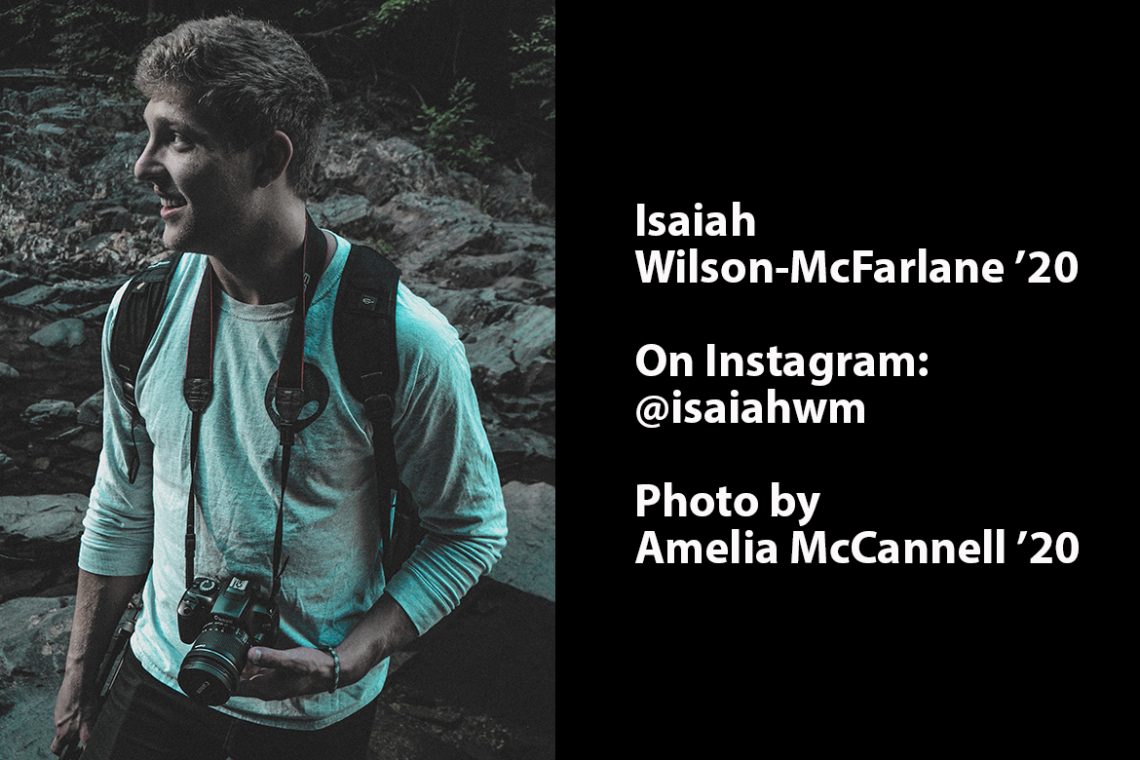UMF student Isaiah Wilson-McFarlane ’20 trains his lens on the beauty and science of the world close to campus
If you’re a regular reader of Farmington First, you probably met landscape photographer and natural science writer Isaiah Wilson-McFarlane ’20 in last month’s issue. The glowing response to Grace McIntosh’s article on her classmate warranted Isaiah’s return, with another gallery of gorgeous images for the January issue of UMF’s online alumni magazine.
While most students decamped for home during the semester break, Wilson-McFarlane continued to capture the beauty of our close-to-campus environs, through the frosty, short days of January. Here are his selects from the first month of 2019. This time, the junior environmental science major from Orono, Maine, shares what crossed his mind as he made each image — and what he hopes each picture illustrates about the forces that influence the natural world around us.
— Marc Glass, director of advancement
Bonney Woods, Farmington, Maine.
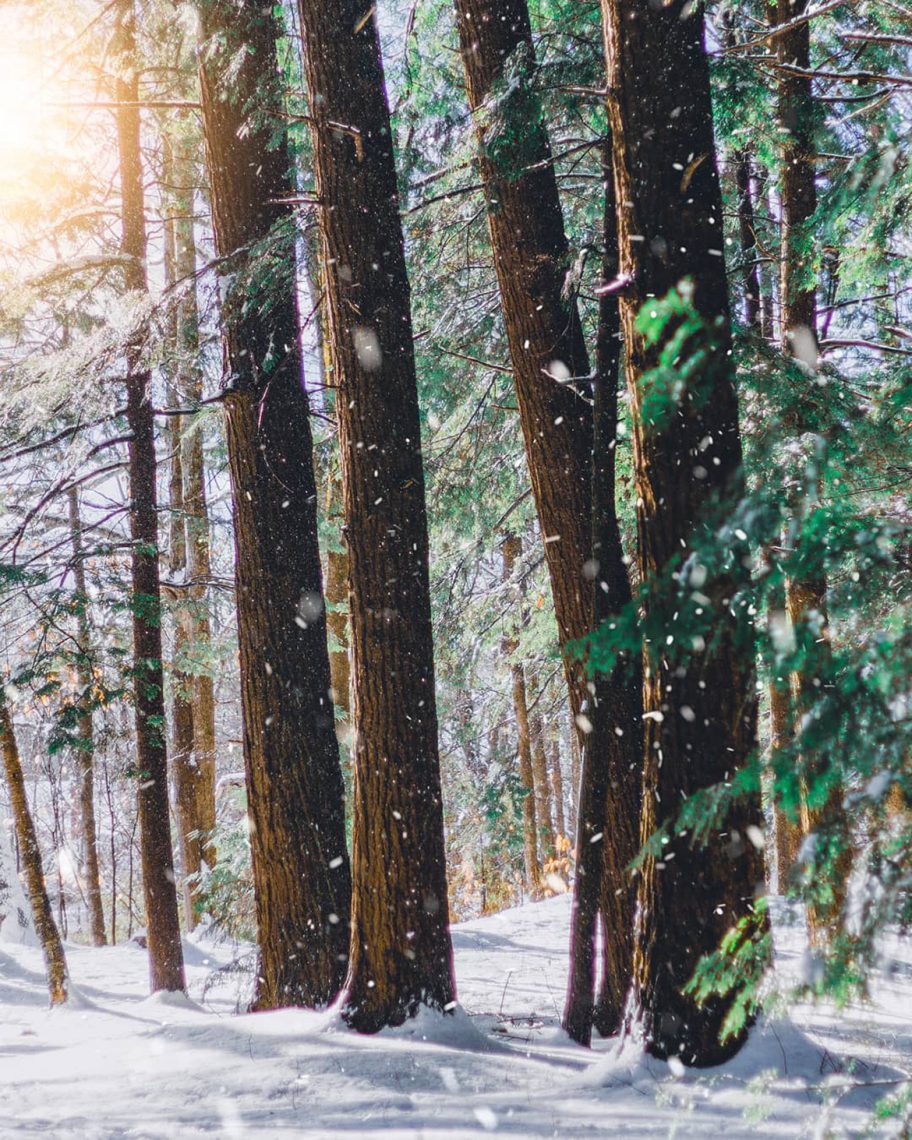
The morning after the New Year’s snowstorm I went out to Bonney Woods around 11 a.m., because the sun was making a long-overdue appearance, highlighting the dusting of snow on all the trees in the area. Trees provide a helpful way to visualize and gauge the carbon dioxide in the atmosphere and what that actually means. Articles on climate change often reference the amount of carbon we are putting into the atmosphere with fossil fuels, but it’s hard to attach meaning to something so seemingly abstract, like truly understanding what 38 billion tons of carbon dioxide released by anthropogenic sources in 2018 looks like. It is easy to think these hemlock trees in the picture get their mass from the ground where their roots are, but in reality the tree’s mass comes from carbon that is pulled from the air. During their photosynthesis reaction, trees take carbon dioxide from the air and combine it with water and energy from sunlight to create glucose, which gives the tree energy, and gives off oxygen, gaining the carbon that used to be in the atmosphere. Walking through the forest among these giants is always a humbling experience for me because it reinforces how I am such a small part of a global system like carbon sequestration. Flora is a vital and necessary part of the Earth’s carbon cycle, which is why cutting down forests for cities, monocropping, and farmland are damaging the ability of the carbon cycle to continue.
The Night Sky Above the University of Maine at Farmington.
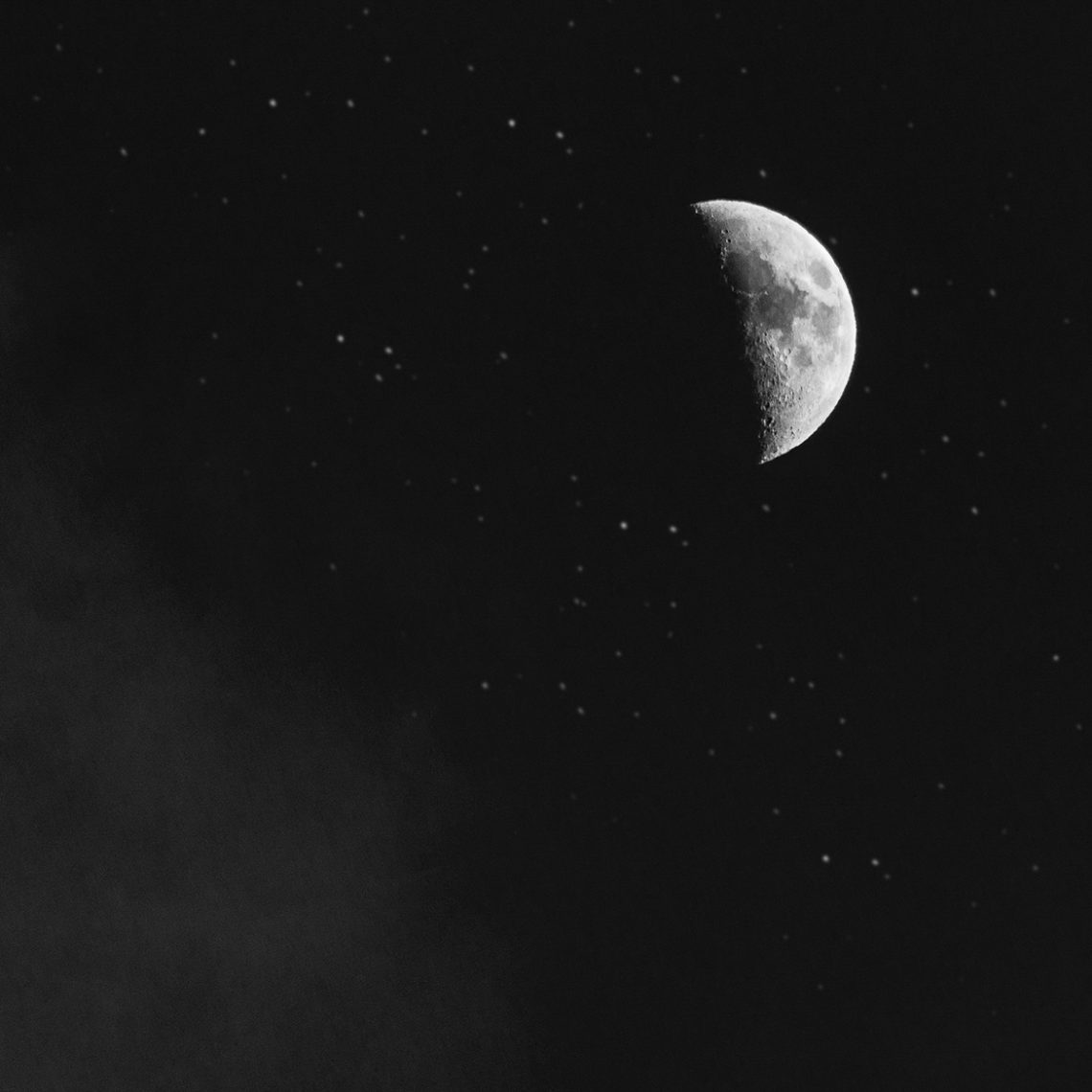
I remember as a kid looking out the car window as my parents drove past moonlit corn and alfalfa fields in Michigan. The parallax effect made the moon look as if it was looking back at us and keeping pace with the car, compared to the trees and corn that whipped past, too fast for me to decipher. I have always been interested in astronomy, and I am hoping to buy an 8-inch Newtonian telescope soon, to observe the craters on the moon more clearly. The moon was created nearly 4 billion years ago, when a Mars-sized object collided with Earth, launching material into orbit. Over time, the pieces of ejecta coalesced under their own gravity into our closest celestial neighbor. Don’t get me wrong though, the moon is not very close. It’s average distance from Earth is 239,000 kilometers. If gravity weren’t a factor, you could line up and fit all of the solar system’s planets between Earth and the moon. This picture is one of my personal favorites because the stars that can be seen behind the moon, and the clouds in the opposite corner of the moon make it aesthetically pleasing. Have you ever wondered why some parts of the moon are darker than others? The large dark circle closest to the left of the visible part of the moon called Mare Imbrium is the remnants of an impact crater more than 700 miles wide created by a protoplanet nearly 3.8 billion years ago. In the aftermath, lava spilled out from under the disturbed crust and flooded the impact area with darker igneous rock. I urge you on a clear night to look up at the stars. The black gaps between the visible stars are filled with billions more stars that are too dim to see with a naked eye. We are tiny.
Flint Woods, Farmington, Maine.
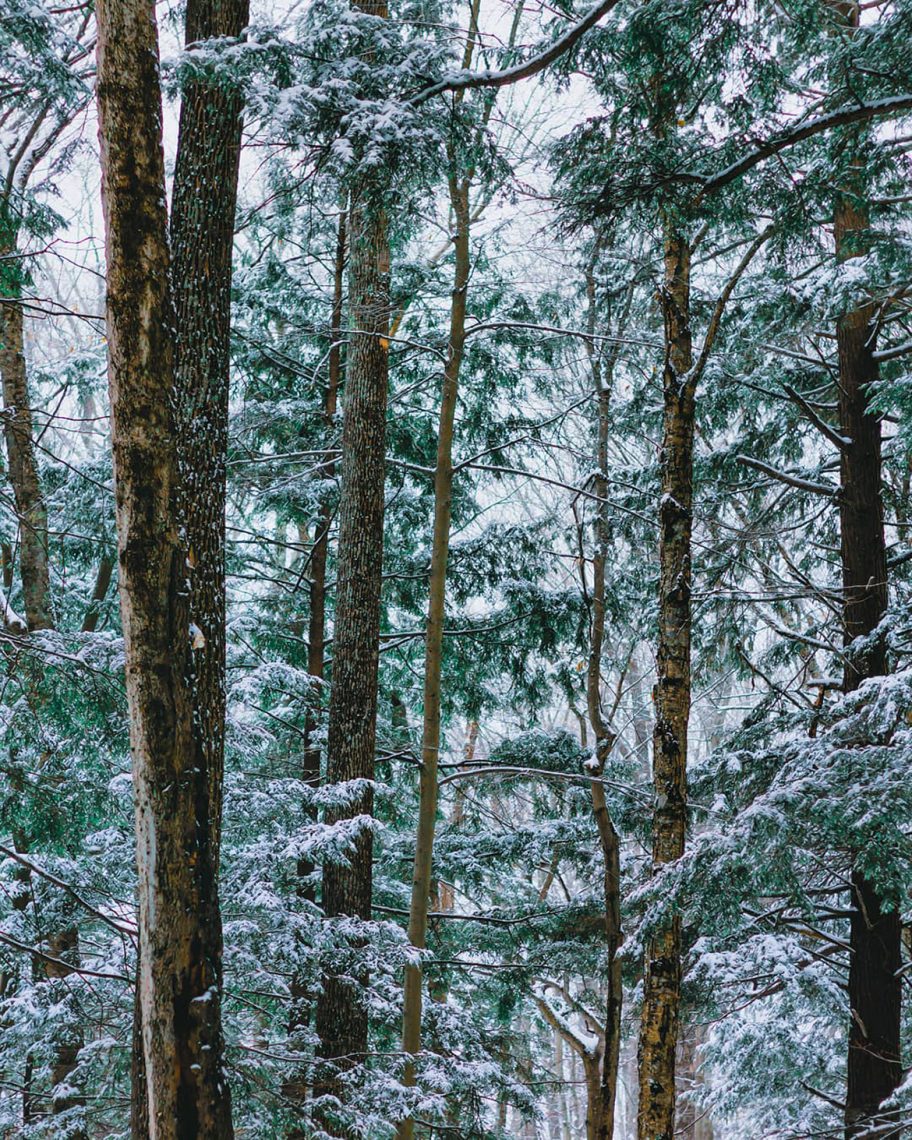
Forest photography is likely the most accessible form of landscape photography and also possibly the most challenging. Here in Maine you are, at any given point, probably less than 20 minutes from a forest, providing ample opportunity to get frustrated by the struggle of finding a decent composition in the woods. Forest photography requires that you look for patterns and contrast in one of the least organized and cohesive natural environments. I try to avoid getting overwhelmed by the chaos in a forest by setting my camera and tripod down in one area and slowly spinning the camera 360 degrees. I usually find something of interest that I would have otherwise missed just walking around, looking aimlessly before the light changes. This picture was taken with that method. The tree trunks all run vertically, giving the composition a cohesive, organized look. The secondary pattern of the horizontal snow-covered limbs adds complexity, while not distracting from the main vertical arrangement. Forest photography requires you to slow down and be immersed in the location.
Mount Blue, From the Powder House Hill Trails, Farmington, Maine.
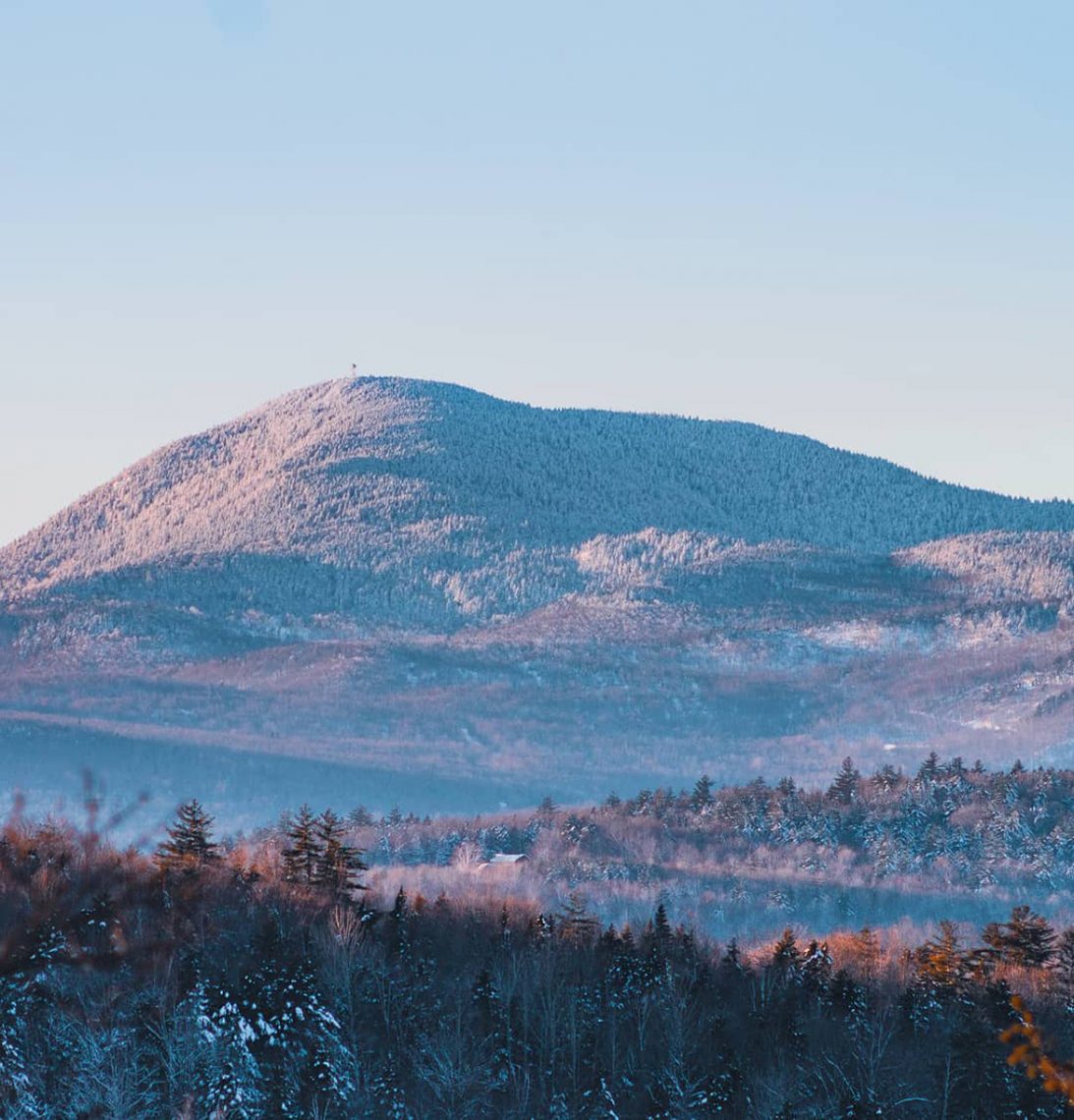
January 12 was brutally cold. I hiked past the newly built 2.5-million-gallon water tank on top of Powder House Hill to an outlook of Mount Blue in the early afternoon (which in January means 45 minutes of sunlight left) and was treated to an almost perfectly lit, sunset-colored vista. In order to get this perspective, I had to hold my tripod above my head about 8 feet in the air to avoid the branch in the bottom left of the frame from covering the scene. By the time I had taken the picture, my fingers couldn’t bend and there were tears coming from my eyes because I was being buffeted by breezes that created wind chills in the single digits. The benefit to extremely cold air is that it isn’t able to hold moisture or other small particulates as well as warm air — the reason hot summer days look so hazy — so I was able to take this very clear picture of Mount Blue despite the 10 miles between the mountain and my camera.
Height of Land, Roxbury, Maine.
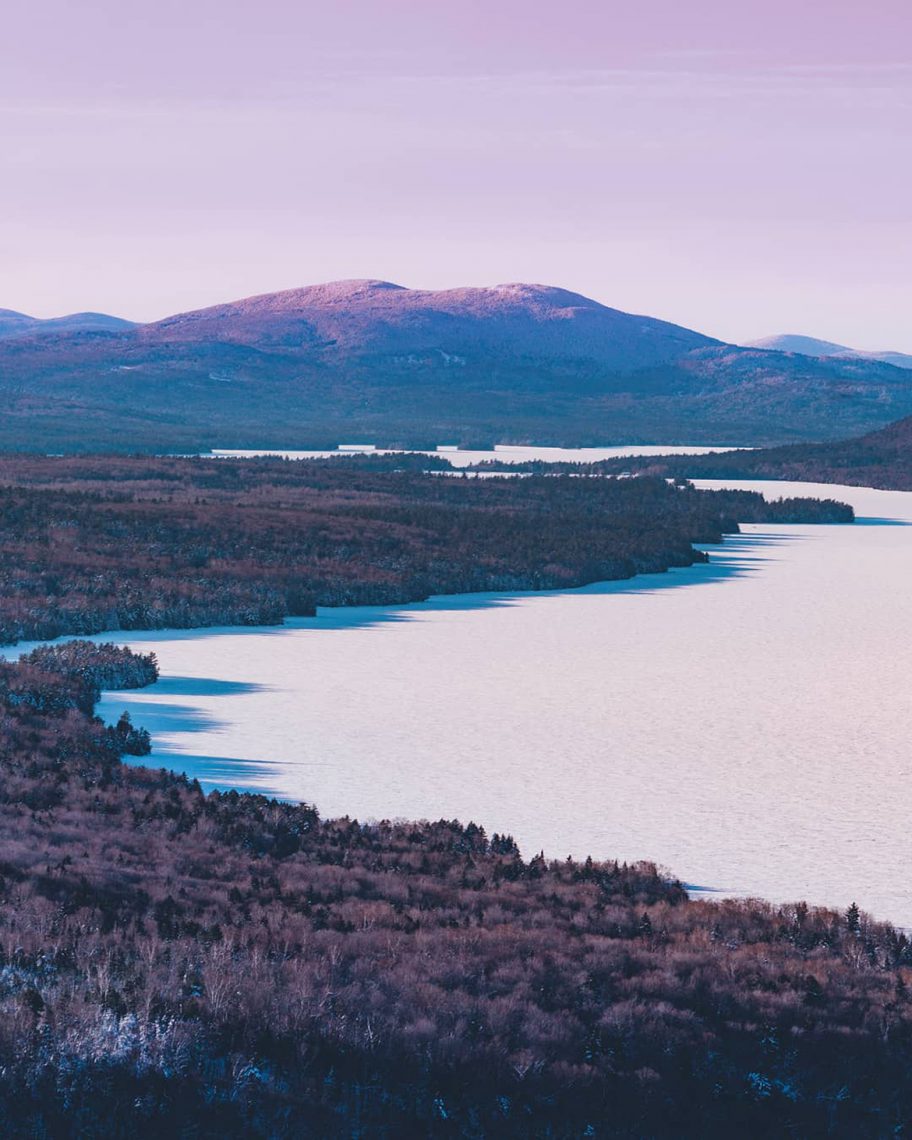
Whenever I go to Height of Land, I am reminded of the coastline paradox. Unlike human-drawn geometrical shapes, a coastline is full of nooks and crannies made by nature. The more one zooms in on the coastline, the more these inconsistencies multiply. Imagine walking around Mooselookmeguntic Lake in this picture with a meter stick. You would only be able to roughly estimate the edge of the lake because every curve smaller than the meter stick would be misrepresented by straight measuring. If you then did the same thing with a foot-long ruler, you would be able to measure the curves with much more accuracy and the overall measurement would be more finely detailed. There is no way to exactly measure the circumference of the lake because you could always use smaller measuring implements than the previous measurement device’s length. The only way to make progress is to decide when our observation of what we see is “good enough” for our uses.
Height of Land II, Roxbury, Maine.
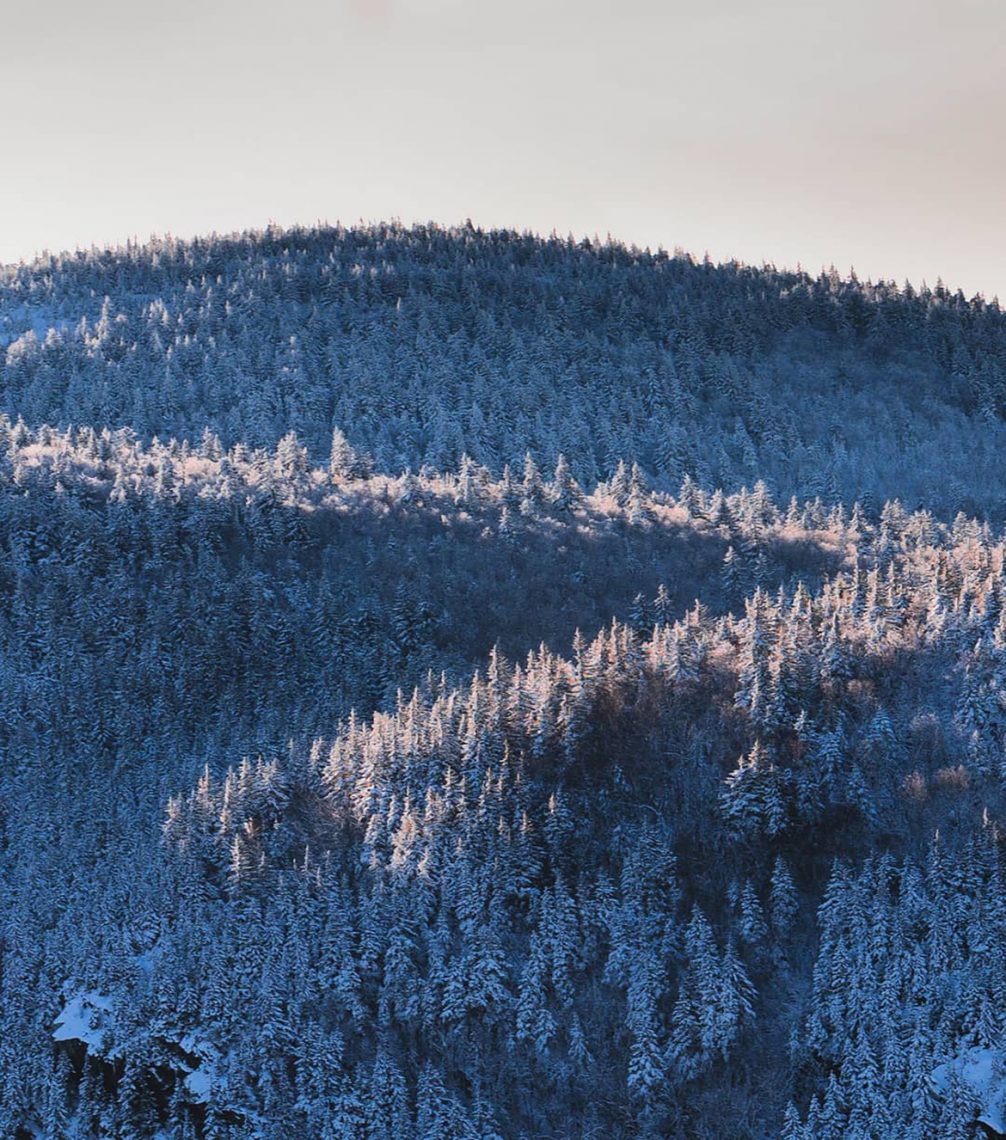
Early sunset was making light paintings on the nearby mountains and spruce trees across the valley from me. I have always wondered what controls the dispersion of tree types in a forest. There are clearly gaps in the spruce trees where deciduous trees are growing that look softer in the picture, but why? Questions like this make me appreciate landscape photography.
Cascade Stream Gorge, en route to Rangeley, Maine.
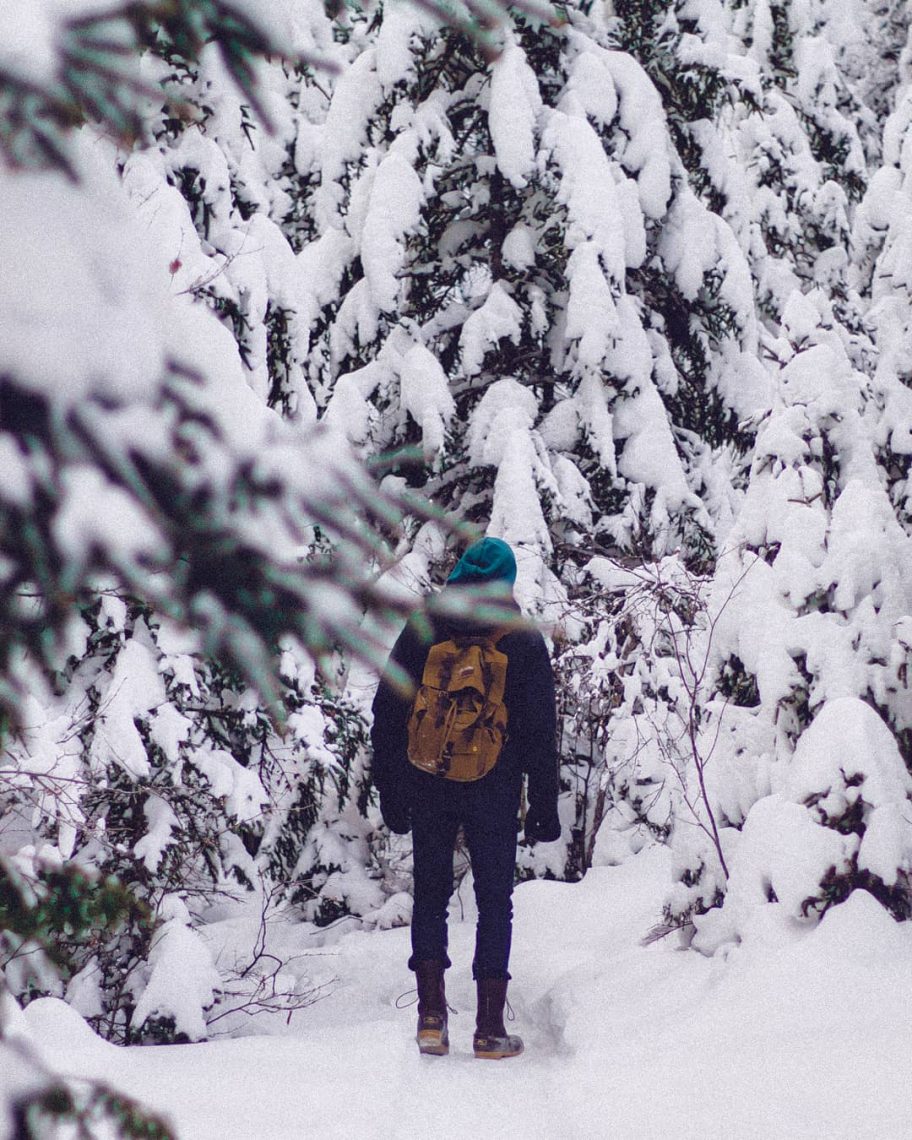
During the break, I went with a friend to Cascade Stream Gorge on the way to Rangeley. If not for the people who had packed the snow down before me, I would have had no idea where to go because the trail was covered in two feet of snow. The conifers were coated with thick heavy snow, and because of their density the woods were completely silent. In the valley I was in, negative buoyancy was dragging cold air to the bottom and completely freezing everything, including my limbs. The struggle with photographing forests is trying to find a subject to center the picture around. Forests often look busy and random with no focal point to grab attention, so sometimes I add myself to the picture to provide a focal point. When the subject of a photo is a person, it becomes easier for viewers to picture themselves there. I do this by setting up my tripod and either setting a timer on my camera, or in this case, getting my friend Hailey to press the shutter button for me.
